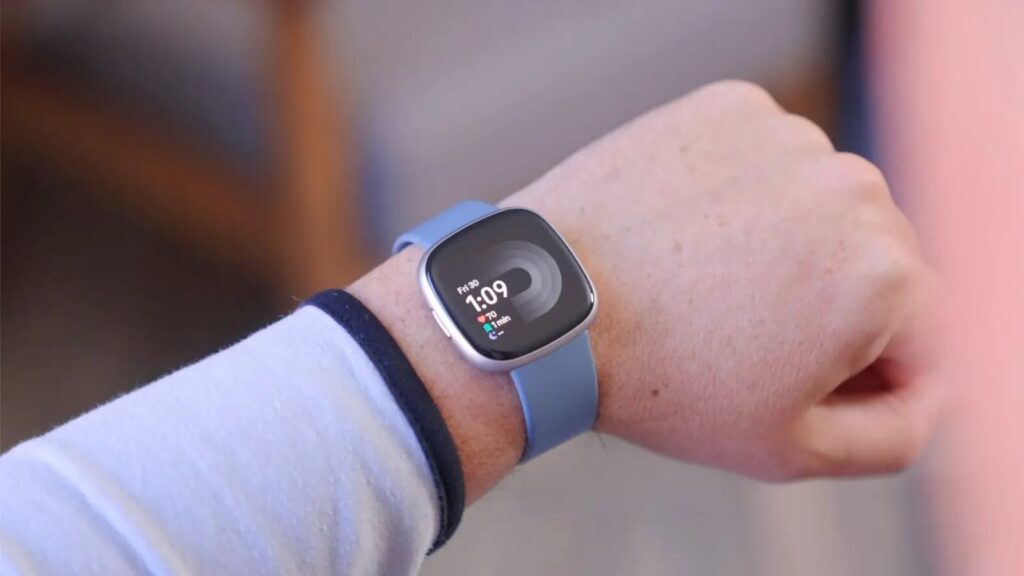Google has been working on sleep soundness for a long time. It has originated several products that can aid you to sleep pleasingly. Some of these products include the Pixel phone, Pixel Buds, Pixel Watch, and Nest. Recently, Google’s team of research scientists has made the development of new sleep features for Fitbit and Pixel Watch possible through the use of AI. By combining machine learning algorithms with raw sensor signals, these devices can provide thorough information associated with sleep, including sleep stages and stress levels.
Moreover, Conor Heneghan, known as the father of modern sleep science and a research scientist at Google, explains that his team leans on various machine learning algorithms to enhance the sleep attributes of devices such as Fitbit, Pixel Watch, and Nest Hub (2nd gen). These algorithms operate by catching raw sensor signals, such as motion or reflected light, and then mapping this data to other practical information such as heart rate and steps.
The data is then further analyzed utilizing additional algorithms to map it to more complex concepts such as sleep stage or stress level. By combining all of these bits of information, detailed information related to sleep can be obtained, which can help users make informed decisions about their sleep habits and improve their overall health.
Let’s take a glance at how sleep features on devices such as Fitbit, Pixel Watch, and Nest Hub utilize AI technology to enhance your sleeping experience.

1. Fitbit’s “Sleep-Tracking” Algorithm and Technology
Fitbit’s sleep technology is operated to track sleep on both Pixel Watch and Fitbit devices. The technology uses an algorithm that interprets patterns in movement and heartbeat intermissions to determine the sleep stage and span. Besides, the algorithm utilizes numerous algorithms that witness the time between each heartbeat and characterizes movements by scrutinizing motion sensors in the device. The data later transmit to the Fitbit cloud site where a machine learning algorithm combines the heartbeat and movement data to estimate the stage of sleep and duration. Users can view this information on their devices or through the Fitbit app.
Also Read- Gadgets That Can Help You Focus, Meditate, Relax And Sleep
2. Sleep Profile: Fitbit’s Machine Learning Algorithm Identifies Your Animal Sleep Characteristics
Fitbit Premium’s Sleep Profile is a machine-learning algorithm that analyzes at least two weeks of sleep data to identify clusters of similar characteristics. This helps determine your Sleep Profile animal (e.g. giraffe, hedgehog, parrot). This feature delivers insight into your sleep habits and provides advice based on your Sleep Profile animal.
Also Read- How To Use Sleep Tracking Feature In WatchOS 8
3. Fitbit’s Sleep Tracking and Expert-Informed AI Generate Your “Sleep Score”
According to Conor, Sleep Tracking produces a Sleep Score, ranging from 0 to 100. It displays in your Fitbit app each morning. This score remains calculated using an expert consensus algorithm that takes into account important factors. Such as sleep duration, percentage of deep sleep (ideally around 15%), and REM sleep. The AI uses these benchmarks to generate your Sleep Score based on input from sleep doctors.
Also Read- 8 Best Royalty-Free Sites To Download kids Lullabies For YouTube
4. Cough and Snore Detection with Machine Learning in Pixel and Nest Devices
The second-generation Nest Hub, Pixel 7, and Pixel 7 Pro devices can detect coughs and snores using a machine-learning algorithm that maps different frequencies in the sound. The algorithm trained with a large dataset to recognize the characteristic sound frequencies. Also the durations of coughs and unique sound profiles of snores. However, the feature does not store the raw audio. But instead, processes the frequencies into numbers that the AI can interpret.
5. “Smart Wake” uses AI to Wake You Up Gently
Smart Wake is a feature that helps you wake up gently by avoiding deep sleep stages. This can cause sleep inertia or grogginess. It uses movement and heart rate patterns to detect when you are in a light sleep stage. And then turns on the alarm within 30 minutes of your desired wake-up time. The alarm vibration is gentle and doesn’t disrupt your sleep.
Also Read- 15 Apps Introduced And Updated In 2023
6. Sleep Sensing for Personalized Sleep Insights
Sleep Sensing is a feature of the Nest Hub (2nd Gen) that uses various sensors to detect movement, breathing, and changes in light and temperature during the night. The data gathered is processed on the device and analyzed by an algorithm. It then feeds personalized insights about the user’s sleep in the morning. This feature does not involve a camera and everything processes on the device itself.
Also Read- 75+ Most Popular Emojis Explained

































